ESE 558 DIGITAL IMAGE PROCESSING I Spring 2002, SUNY at Stony Brook
Time: Tu 7 pm to 10 p.m., Light Engg. Bldg. Room 152
Instructor: M. Subbarao
6/7/02 ESE558 Written projects
5/03/02
ESE 558 FINAL EXAM IS ON 5/14/02 TUESDAY
IN THE SAME ROOM AS LECTURE ROOM
(ROOM 102, LT. ENGG.)
PERIOD: 8 PM TO 10.30 PM
MATERIAL INCLUDED FOR THE FINAL EXAM:
1. Image Restoration
a. Journal paper posted on the website
b. Gonzalez and Woods (new book, 2ed)
Following pages in Chapter 5:
pages
220 to 222,
pages
254 to 270.
2. Color
Gonzalez and Woods (new book, 2ed)
Following pages in Ch. 6
pages 282 to 302.
3. Image Compression
Gonzalez and Woods (new book, 2ed)
Following pages from Ch. 8
pages 409 to 424,
pages 440 to 444,
pages 467 to 485,
pages 498 to 506,
4. Image Reconstruction
Rosenfeld and Kak, Vol. 1, Ch. 8,
Following pages are included
pages 353 to 357,
pages 366 to 370.
3/1/02 Low-pass filters
3/1/02 Sample JPEG images (128x128 size)
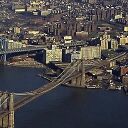
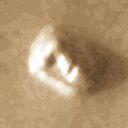
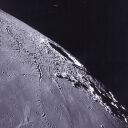
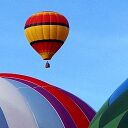
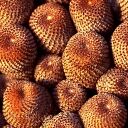

2/27/02 Selected lecture transparancies
Here is a selected set of lecture transparancies converted from free-hand writing format to
html and doc format by PRAKASH SEKHAR (prakash_sekhar@yahoo.com), Spring 2002.
These transparancies are unedited and incomplete, but may be useful to some students.
View these using the Internet Explorer Browser (other browsers
result in some problems with displaying diagrams).
TA2web.doc
TA2web.html
TA5web.doc
TA5web.html
2/26/02
A reference paper for Image Restoration
Murali Subbarao, Tse-Chung Wei, and Gopal Surya,
"
Focused Image Recovery from Two Defocused Images Recorded with Different
Camera Settings
,"
IEEE Transactions on Image Processing, Vol. 4, No. 12,
Dec.1995.
Softwares for portable documents :
PDF reader : Acrobat Reader
PS reader : Ghostview
----------------------------------------
IMPORTANT CHANGES TO COURSE ORGANIZATION
The percentage weight for Mid-term
test and Final exam have been reduced
to 30 percent each, the weights for
the project and the written reports have been
increased to 20 percent each. This
reflects the expected level of learning through
each component.
-------------------------------------
SUGGESTED TOPICS FOR WRITTEN REPORT
I have organized the suggested topics for written
report into 3 parts:
PART I Topics that will be (almost) definitely covered
PART II Topics to be covered subject to availability of
time
PART III Discretionary topics that may be selected
for inclusion
You can select any set of related topics for your written report.
You should prepare the written report based on at least two, but preferably
three or four references. Your written report should include about
5 pages of
discussion of the topic (e.g. theory, algorithm, application), references
used,
and a set of about 5 presentation slides (LaTex or PowerPoint format preferred).
Optionally, you may include an Excercise question/problem/project.
All written reports should be in electronic (preferably html) format.
All reports will be put on the course website along with your name.
All reports will be available for the general public for self-study.
-------------------------------
PART I Topics that will be (almost) definitely covered
1.0 Introduction
1.1 Image formation in cameras and human eye
1.2 Image formation in other devices (X-ray, tomography, MRI
etc.)
1.3 Continuous images are sampled and quantized to get digital
images
1.4 Digital images are two-dimensional signal data
1.5 Examples of digital image processing operations
1.6 Areas of applications (industrial, medical, defence, photo-editing)
1.7 Related areas (computer vision, graphics, image analysis,
pattern recognition)
2.0 Digital Image Fundamentals
2.1 Human visiual system (HVS)
2.1.1
Structure of HVS
2.1.2
perception of color, brightness, and contrast
2.2 Digital Image Sensors
2.2.1
Cameras, CCDs, scanners, medical sensors (CAT)
2.3 Image Formation
2.3.1 Illuminatuion
and reflection
2.3.2 Iimage
formation in a pin-hole camera
2.3.2.1 Perspective projection relations
2.3.3. Image formation
in a convex lens camera
2.3.3.1 photometric and geometric information in a 3D scene
2.3.3.1 .radiance, irradiance, and luminance
2.3.4 Image Sampling and Quantization
2.3.4.1 spatial and gray level resolution
2.4 Representation of digital images as 2D arrays
2.4.1 pixels,
gray levels, their trade-off for different types of images
2.4.2 zoom-in/zoom-out
using bilinear interpolation
2.4.3 Basic
relationships between pixels
2.4.4
neighbors, adjacency, connectivity, regions, boundaries
3.0 Image Enhancement: Spatial domain techniques
3.1 gray level transformation
3.1.1 negative, log, power, gamma, linear, gray-level slicing, bit-plane
slicing
3.2 Histogram transformation
3.2.1 Equalization
3.2.1.1 Theory in thencontinuous domain
3.2.1.2 Discrete domain algorithm
3.2.2
Specification
3.2.2.1 theory in thencontinuous domain
3.2.2.2 discrete domain algorithm
3.2.3 Local
enhancement
3.2.4 Mean,
std, and median computaiton using histograms
3.3 Arithmetic/logic operations
3.3.1 add, subtract, averaging, and, or
3.4 Filtering through convolution
3.4.1 smoothing, noise reduction
3.4.2 derivatives, sharpening, deblurring
3.5 Order-statistic filters
(median, min, max, k-nearest neighbor mean)
4. Image Enhancement: Fourier domain techniques
4.1 One-dimensional
Fourier Transform
4.1.1 continuous domain
4.1.2 discrete domain
4.2 Two-dimensiona l Fourier
Transform
4.2.2 continuous domain
4.2.3 discrete domain
4.3 Filtering
4.3.1 Computational algorithm
4.3.2 Relation to spatial domain filtering
4.3.2.1 Convolution theorem
4.3.3 Smoothing filters
4.3.3.1 ideal low-pass, Butterworth, Gaussian
4.3.4 Sharpening filters
4.3.3.1 ideal low-pass, Butterworth, Gaussian, derivative
4.4 Homomorphic filtering
4.5 Properties of Fourier Transform
4.6 Computational implementation
5.0 Image Restoration
5.1 Model of image degradation/restoration
5.2 Noise models (uniform
and Gaussian)
5.3 Linear shift-invariant degradations
5.4 OTF, MTF, PTF,
5.5 PSF, LSF, ESF
5.6 Estimation of degradation
OTF/PSF
5.7 Motion deblurring
5.8 Inverse filtering
5.9 Weiner Filtering
5.10 Spatial domain convolution/deconvolution
transform
5.11 Geometric transformations
6.0 Color Image Processing
6.1 light spectrum, visible wavelengths
6.2 Color models
6.2.1 RGB
6.2.2 CMYK
6.2.3 HSI
6.3.1 Transformation of RGB to HSI and back
6.2.4 CIE Lab
6.2.5 Color correction (white balancing, tone, etc)
6.3 Color image processing
(Histogram specification and filtering)
7.0 Image Compression
7.1 Fundamentals
7.1.1 Coding redundancy
7.1.2 Interoixel redundancy
7.1.3 Psychovisual redundancy
7.1.4 Fidelity criteria
7.2 Image compression models
7.2.1 Source encoder and decoder
7.2.2 Channel encoder and decoder
7.2.3 Measuring information
7.3 Error-free compression
7.3.1 Huffman, B2, Binary-shift, Huffman-shift, coding
7.3.2 Arithmetic, and LZW coding
7.4 Lossy compression
7.4.1 Transform coding model
7.4.2 Discrete Cosine Transform
7.4.3 Bit allocation based on zonal and threshold coding
7.4.4 An Example: Sequential baseline JPEG
7.4.5 JPEG 2000 and MPEG basics
8.0 Image reconstruction
8.1 Radon transform
8.2 Examples of projection data
(x-ray,
emission, and ultra sound tomography)
8.3 Fourier slice theorem
8.4 Filtered backprojection
8.5 Algebraid reconstruction techniques
--------------------------------------------------------------
PART II: Topics to be covered subject to availability
of time
9. Binary image processing
9.1 Thresholding based on histogram analysis
9.2 Optimal thresholding example for Gaussian
gray level distributions
9.3 Connected component analysis (labeling,
area, position, orientation)
9.4 Morphological operations (dilation, erosion,
opening, closing, etc.)
10. Sampling and quantization
(Reference Ch. 4 of Rosenfeld and Kak, leave
out topics related to random field models of images)
10. 1 Sampling using an array of points
10.2 Sampling theorem
10.3 Aliasing, sampling using orthonormal
functions
10.4 Optimal quantization
--------------------------------------------------------
PART III Topics that may be selected for inclusion
11. Topics of interest
11.1 Image file formats
11.1.1 GIF, TIFF, JPEG
11.1.2 Flashpix
http://www.ee.sunysb.edu/~cvl/ese558/sp2001/refdocs/FPX_SPEC.PDF
11.2 Comparison of CMOS
and CCD technology for image sensing and processing.
11.3 JPEG2000, http://www.ee.sunysb.edu/~cvl/ese558/sp2001/refdocs/jpeg2000_paper.pdf.
11.4 Digital Watermarking
Refs.: ftp://ftp.nj.nec.com/pub/ingemar/papers/ip97.ps
http://www.ee.princeton.edu/~minwu/public_paper/icip98_wmark.ps
11.5 Internet Imaging
Protocol
Ref: http://www.ee.sunysb.edu/~cvl/ese558/sp2001/refdocs/Internet_Image_Protocol.pdf
11.6 Transcoding
http://www.research.ibm.com/networked_data_systems/transcoding/Publications/
11.7 Modern Digital
Camera, Reference : http://www.pctechguide.com/19digcam.htm
11.8 Edge detection
(Zero-crossings of LOG, Canny's edge detector)
11.9 Wavelet
analysis and its application to image compression
11.10
Constrained deconvolution filtering
11.11 recursive
filtering
11.12 Karhunen-Loeve
transform
11.13 Image
editing softwares: GIMP, ImageMagick, Photoshop
12. Any other topic of interest subject to prior approval.
See http://www.dai.ed.ac.uk/CVonline/ for a list of topics.
Course Reference Materialhttp:
//www.ee.sunysb.edu/%7Ecvl/ese558/sp2001/refdocs/ColorFAQ.pdf
ColorFAQ.pdf
GammaFAQ.pdf
Guided_tour.pdf
Coloreq.pdf
Jpeg2000_paper.pdf
Internet Image Protocol.pdf
ImageMagick.pdf
ICC Profile.pdf
FPX_spec.pdf
2/15/02
Question papers of previous years:
Mid-term 2001.ps
Final 2001.ps
Mid-term 1999.ps
Final 1999.ps
Mid-term 1998.ps
Final 1998.pdf
Final 1997.ps
Mid-term 1997
Final 1995
Mid-term 1995
Ph.D qualifying exam questions:
Presentation topics already taken:
1. Moges, Mequanint: Digital watermarking
2. Azael, avillanu@ic.sunysb.edu, 2.2.1 Cameras, CCDs,
scanners, medical sensors (CAT)
3. Jojo Abraham, Internet Imaging Protocol , reference
http://www.graphcomp.com/info/specs/livepicture/iip_10.pdf
4. Wang, Jin, JPEG2000
5. Jia Pu, Edge detection in color images
6. Avinash Padmanabhan, Feature detection in color images.
7. HSU,MING-HUNG, "DATA STRUCTURE OF IMAGE FILES"
8. Preethi Karthik, Image file formats,
http://www.scantips.com/basics09.html
http://www.faqs.org/faqs/graphics/fileformats-faq/
http://www.cs.sfu.ca/undergrad/CourseMaterials/CMPT365/material/notes/Chap3/Chap3.2/Chap3.2.html
9. Vaishali Wani <vwani@ece.sunysb.edu>, Basics
of pattern recognition.
10. Wei Li, CIE Lab, and Color correction (white balancing,
tone, etc)
11. Zhenghao
Zhang, IMAGE RESTORATION. basic idea of Inverse filtering, Winer filtering,
and Wavelet Restoration. References: The Gonzalez/Woods book, and
http://telin.rug.ac.be/~frooms/links/restor.html
12. Ashish Shah, Image Processing Architertures
13. "Carl Wittenberg" <Wittenbe@symbol.com>,
Estimation of OTF/PSF, and blind deconvolution.
14.Amol
Shanbhag, Transform domain
Image reconstruction techniques.
15. Amol Inamdar, "Modern Digital Cameras".
16. Puloma Mukherjee, image compression.
17. Amith Veigas, Image Restoration and Motion Deblurring.
18. Yemin Htay , Wavelet analysis and its application
to image compression
19. Shanshan Xu, wavelet analysis and its application
to image compression
20. LeTian Gu, Comparison of CMOS and CCD technology
for image sensing
and processing
21. Vidya Vemuri, Binary Image Processing
22. Hetal Sanghvi, Image Registration.
1.Survey of Medical Image Registrattion-J.B.Antoine Maintz and Max23. Muling Peng, Medical Image Processing
Veirgever
2.http://www.dai.ed.ac.uk/CVonline
background and how to of MRI, CT, and ultrasonic image processing.
24. Gregory Bird, Gray-level Transformations
25. ANDRES CASTIBLANCO,
Image Enhancement:Spatial domain techniques
( gray level transformation, Histogram transformation).
References: Digital Image Processing, R.C. Gonzalez and R.E. Woods
Digital Picture Processing, ARosenfeld and A.C. kak
http://www.dai.ed.ac.uk/CVonline/
26. Jui-Tsun Hung, MPEG 'The emerging
Video and Multimedia standards', 'Video compression27. Anubhav Sahu, Color Image Processing.
techniques', and ' MPEG compression for
motion-intensive application'. The references would
be as follows:
1."Video and Image Processing in multimedia Systems",
Borko Furht,....
2. "Multimedia Technology for Applications", Bing J.
Sheu...
3."Motion Estimation Algorithms for Video
compression", Borko Furht,...
4."http://mpeg.telecomitalialab.com/"
5."http://www.tnt.uni-hannover.de/project/mpeg/audio/"
Is it suitable for me to do my final report?
Sincerely,
28. Vaishali Wani, pattern(character) recognition.
29. Sankalp S Kallakuri , "Image transforms and comparison
between them(KL,Walsh,Hadamard,DCT,)".
30. sepideh shokouhi, Algebraic reconstruction techniques
Image reconstruction in positron emission tomography with iterative
reconstruction techniques. References:
1. http://ime-web.ime.kfa-juelich.de/ime_www/pet/mitarbeiter/kehren/marvin/31. Insiya Lokhandwala, Image Compression
ime-vortrag/slideshow.html2- A gentle tutorial of the EM-algorithm and ita application to
parameter estimation for gaussian mixture at hidden markov models by
Jeff A. Bilmes , International computer scinece institute Berkley CA
94704 , April 1998
32. Mahesh Vemula, Fractal Image Compression.
References
(i) Fractal Imaging by Ning Lu
San Diego : Academic Press, c1997.
(ii)Fractal image compression : theory and applications by
Yuval Fisher, editor. Springer Verlag 1995
33. Neeru Sharma, Optimal gray level quantization and color
quantization in
image compression.
34. yu-chung tseng, human face tracker system-Using Digital
Imaging Processing
35. Ephraim Adeola, Representation and Analysis of Visual Images
Reference Materials:36. Bing Zhao, color space
1) Digital Image Processsing 2nd Edition; Gonzalez R.C. and Woods R. E.
2) Gonzalez R.C. and Woods R. E. website for the DIP
bookhttp://www.imageprocessingbook.com/
2) Vision and Modeling Group websitehttp://vismod.www.media.mit.edu/vismod/
3) visionscience website http://www.visionscience.com/
4) Journalofvision website http://www.journalofvision.org/2/1/
References:37. Robert Barr, "Error-free image compression", GW & RK
1. Image synthesis--theory and practice, Nadia
Magnenat-Thalmann etc.
2. Digital Imaging--theory and applications, Howard
E. Burdick.
3. Vision in man and machine, Martin D. Levine. 4.Digital
Image Processing, Rafael C. Gonzalez etc.
38. Dan Hong, 3-D Model Construction Using Range and Image Data
References:39. Rohit Pai, Sampling theorem and aliasing. RK, etc.
1.Blais and Levine 1995
Registering Multiview Range Data to Create 3D Computer Objects IEEE Transactions on Pattern Analysis and Machine Intelligence 17(8):820-824
2.Chen and Medioni 1992
Object modelling by registration of multiple range images Image and Vision Computing, 10(3):145-155.
3.Boissonnat 1984
Geometric structures for three-dimensional shape representation ACM Transactions on Graphics 3(4):266---286.
4.Soucy and Laurendeau 1995
A general surface approach to the integration of a set of range views IEEE Transactions on Pattern Analysis and Machine Intelligence 14(4):344-358.
5.M.Reed and P.K.Allen. 1999
3-D modeling from range imagery. Image and Vision Computing,17(1):99-111.
40. Leonardo A. Ramirez, Image sensors, leoand23@hotmail.com
http://www.extremetech.com/print_article/0,3428,a=2036,00.asp
41. Yu Zheng, Yu, 'General Matching and Registration Methods'
References:
1. The Correspondences by Sensitivity to Movement (CSM) Algorithm
2. View-Based Object Recognition
3. Recognizing Flexible Objects Pedro F. Felzenszwalb Daniel P.
Huttenlocher
2/13/02:
Mid-term Test: March 19,
Tuesday, 7 pm to 9 pm.
Final Exam : May 14, Tuesday, 8
pm to 10 pm.
Project Due date: Due by March 5
Deadline for selecting a topic for written report: March 12
Approval date for written topic: March 19
Deadline for submission of written report: April 16
Presentations of written report: April 30, and May 7
2/9/02 Project1 Specifications (prj1-2002.ps)
- Instructions and sample programs for using jpeg library on Windows and Linux machines. Test data: plier1.jpg plier2.jpg plier3.jpg
The following links may not be needed for the project,
edge2.c , rasio.h , rasio.c
Test data(SUN raster format images): test1.ras , test2.ras , test3.ras
Some Source code from ImageMagick(v5.2.3) library
on RGB to HSL and back transformation.
RGB2HSL--and--HSL-to-RGB-code
Some Image Processing Libraries :
1. JPEG libraries
-- You have to download source codes and compile them to make a *.lib
file.
2. Tiff
image libraries
-- This is an official Tiff library website. You can get many information
here.
3. FreeImage
Project
-- This is an image processing library for Windows and
Linux. It is simple and convenient. Many image formats are supported.
4.
SUSAN Libraries
-- This is a low level image processing libraries for noise filtering,
edge detection, and corner finding.
IrfanView32 (iview351.exe) -- Image viewer for various image formats (Win95,98)
or go to IrfanView Homepage
for the latest version.
Catalog description:
It covers digital image fundamentals, mathematical preliminaries of
two-dimensional systems, image transforms, human perception, color basics,
sampling and quantization, compression techniques, imageenhancement,
image restoration, image reconstruction from projections, and binary image
processing.
Text books:
1. Digital Image Processing,
R. C. Gonzalez and R. E. Woods, Prentice-Hall, 2002.
Reference Material:
1. http://www.dai.ed.ac.uk/CVonline/
2. Digital Picture Processing, Vol. 1,
A. Rosenfeld and A. C. Kak, Academic Press,1982.
3. Journal Papers, Handouts, Web pages.
Report
and Presentation:
Each student should prepare instructional or tutorial material on a topic
in Digital Image Processing for contribution to a web based course at
http://www.dai.ed.ac.uk/CVonline/ . The written report should be about
5 pages long and a class presentation should be given based on the
report for 6 minutes.
GRADING
Programming project (one project): 20 %
Report and presentation (6 mins.) 20%
Test 1 (open text books):
30%
Test 2 (open text books):
30%
Some knowledge of C/C++ programming language is required for
completing the project.
Grade ranges:Absolute grading based on percentage scores
A,A: 80100, B+,B: 7079,
B,C+,C,C: 6069, D+,D: 5059, F: 049.
Office Hours:
Tuesday,
Thursday 9.15 a.m. to 11.15 a.m.
Contact:
Prof. Murali Subbarao
murali@ece.sunysb.edu
Room 233 in Lt. Eng. bldg.,
Ph. No. 6316328405
Home Page: http://www.ee.sunysb.edu/~murali
E-Mail ( murali@ece.sunysb.edu )
USEFUL LINKS
ImageMagick: http://www.imagemagick.org